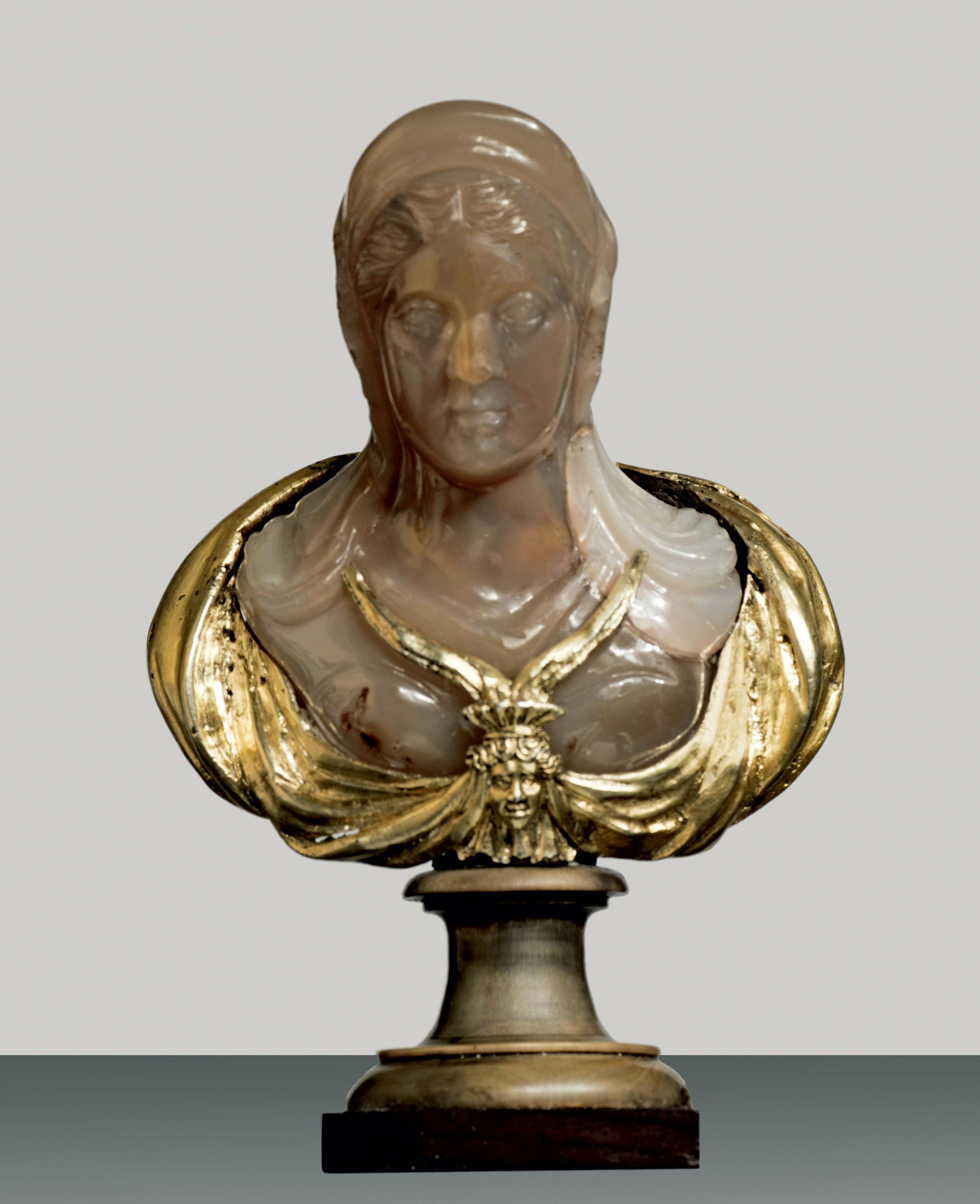Small bust of Antonia the Younger
Roman art
The small sculpture depicts a matron wearing a veil and a diadem, characteristics that allude to the iconography of the Augusta. The hair is divided by a central parting into soft waves that appear to be gathered at the back in a low ponytail, as suggested by the volume visible under the veil covering the nape of the neck. This hairstyle is reminiscent of the first portrait type of Antonia the Younger, created for her marriage to Claudius Drusus, Livia's youngest son, in 16 BC.
In view of the chalcedony bust, the artifact can be dated to the period between the appointment of Antonia as Augusta under her nephew Gaius Caligula and the early years of his son Claudius’ reign, when a second portrait type of Antonia was created. The important role played by this matron in the domus Augusta is demonstrated by the considerable number of small precious stone portraits of the woman, five in all.
The sculpture was already part of the Medici collection in 1589, when, along with three other busts, it formed part of the decoration of the temple-shaped cabinet in the Tribuna; signs of the insertion of the bust into the metal drapes and on to the horn pedestal are still visible today, and can be dated to the end of the 16th century.
